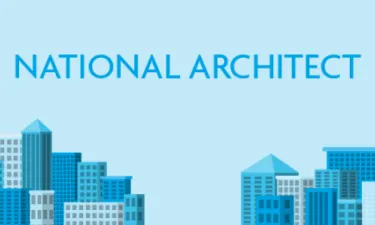To become an architect in the United States, you must earn a license from the individual licensing board in the state or territory (called a “jurisdiction”) where you want to practice—there is no national license. Each of the 55 U.S. jurisdictions sets their own requirements for licensure in that jurisdiction, but they typically include a combination of education, experience, and examination.
Licensure requirements can also vary depending on the type of license you’re earning:
- Initial license: Your first U.S. architecture license—some licensing boards will refer to this as licensure or registration by examination
- Reciprocal license: If you’re already licensed in one U.S. jurisdiction, you may be able to use your existing qualifications to earn a license in another jurisdiction—some licensing boards refer to this as licensure by endorsement, reciprocity, or comity
How to Earn an Initial Architecture License
As you pursue your initial architecture license, you should check your jurisdiction’s requirements. The process may differ depending on your chosen jurisdiction, but the basics are similar:
- Create your NCARB Record. Your NCARB Record is a verified account of your professional history that demonstrates your qualifications for licensure—learn how to start one. You will use your Record throughout the licensure process to document your education and employment history, document AXP hours, schedule exams, and more.
- Meet your jurisdiction's education requirement. Most jurisdictions require that you earn a degree from an architecture program accredited by the National Architectural Accrediting Board (NAAB) to qualify for an initial license, but 17 jurisdictions offer additional pathways to licensure for those with some other—or no—degree.
- Gain and document the required experience. All 55 U.S. jurisdictions accept the Architectural Experience Program®(AXP®), but some require additional experience. To complete the AXP, you record a variety of tasks related to architecture. At least half of this work must be performed under the supervision of an architect licensed in the U.S.
- Pass the national licensing exam. All 55 U.S. jurisdictions require you to pass the Architect Registration Examination® (ARE®). The exam includes six divisions (scheduled separately) with content that aligns to the AXP’s experience areas.
- Meet any extra jurisdictional requirements. Some boards require additional experience or a location-specific supplemental exam before licensure.
- Have your NCARB Record transmitted to the jurisdiction where you would like to be licensed.
How to Earn a Reciprocal Architecture License
If you’re already licensed in one U.S. jurisdiction, the process for earning a reciprocal license in another jurisdiction is typically simpler—especially if you hold an NCARB Certificate, a credential that offers professional mobility and access to free continuing education.
- Check your jurisdiction’s reciprocal licensure requirements. Keep in mind that many states require you to hold the NCARB Certificate, and all states accept it. There are pathways to certification for all architects, including those who don’t hold a degree from a NAAB-accredited program. Learn how to apply for certification.
- Have your NCARB Record transmitted to the jurisdiction where you would like to be licensed. Learn more about how to transmit your Record.
- Meet any extra jurisdictional requirements. Some boards require additional experience or a location-specific supplemental exam before licensure.
International Applicants for U.S. Licensure
If you are licensed to practice architecture in a country outside of the United States, you may be eligible NCARB’s pathway for international architects. Through this pathway, you’ll earn your NCARB Certificate first, and then use your NCARB Certificate to apply for reciprocal licensure in a U.S. jurisdiction. Learn more about the Foreign Architect Path and other international options.
What’s NCARB’s Role?
NCARB does not issue architecture licenses. Our role is to develop and recommend national standards for licensure, which many licensing boards choose to adopt. We also assist jurisdictions with the administrative side of the licensure process—for example, by administering the ARE and maintaining licensure candidates’ NCARB Records. Helping with these processes lessens the financial and administrative burden on individual jurisdictions. Learn more about NCARB’s role.
Why Earn a License?
The reasons to earn a license to practice architecture are as varied and personal as the path to get there—here are just a few benefits of licensure:
- Title: Once you’ve earned a license, you can officially call yourself an architect.
- Independence: With a license, you can practice independently.
- Trust: Your license gives firms, clients, and the public confidence in your skills and ability to protect their health, safety, and welfare.
- Skills: Completing your education, experience, and examination requirements helps guide you through continuing your professional growth and development.
- Advancement: Having a license provides you with greater career opportunities.






